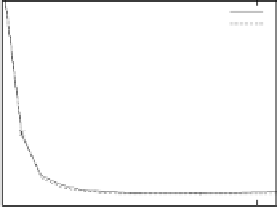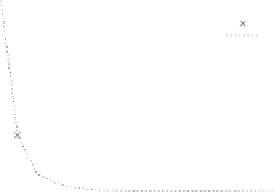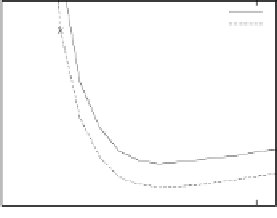Information Technology Reference
In-Depth Information
0.1
0.01
small RNN TRN
large RNN TRN
small RNN TST
large RNN TST
small RNN
large RNN
small FFNN
large FFNN
0.08
0.009
0.06
0.008
0.04
0.007
0.02
0
0.006
2
4
6
8
10
12
14
2
4
6
8
10
12
14
(a)
(b)
Iteration
Iteration
Fig. 9.10.
Mean squared error of super-resolution: (a) the recurrent network on the training
set and the test set; (b) detailed view of the test set performance, compared to FFNN.
9.3 Filling-in Occlusions
Occlusion is a major source of image degradation when capturing real-world im-
ages. Many computer vision systems fail if the object of interest is not completely
visible. In contrast, humans can recognize partially occluded objects easily. Obvi-
ously, we subconsciously fill-in the missing parts when analyzing a scene. In fact,
we are surprised when an occlusion ends and the appearing object part does not look
as expected. Johnson
et al.
[113] have shown that this holds even for infants. By 4
months of age, infants appear to perceive the unity of two rod sections extending
from behind an occluding object [112, 121].
Few attempts have been made to reproduce this behavior in computer vision
systems. One example is the approach of Dell'Acqua and Fisher [51]. They recently
proposed a method for the reconstruction of planar surfaces, such as walls, occluded
by objects in range scans. The scene is partitioned into surfaces at depth discontinu-
ities and fold edges. The surfaces are then grouped together if they lie on the same
plane. If they contain holes, these are filled using linear interpolation between the
border points.
Another example is the face recognition system described by O'Toole
et al.
[171].
They used average facial range and texture maps to complete occluded parts of an
observed face.
There are several neural models for pattern completion, including the ones
proposed by Kohonen [126] and by Hopfield [101]. Usually they work in auto-
associative mode. After some training patterns have been stored in the weights of
the network, partial or noisy versions of them can be transformed into one of the
stored patterns.
In particular, recurrent auto-associative networks can iteratively complete pat-
terns and remove noise by minimizing an energy function. In these networks, pat-
terns are stored as attractors. Bogacz and Chady [33] have demonstrated that a local
connection structure improves pattern completion in such networks.
Continuous attractor networks were proposed by Seung [209] to complete im-
ages with occlusions. For digits belonging to a common class, he trained a two-layer










































































































Search WWH ::

Custom Search